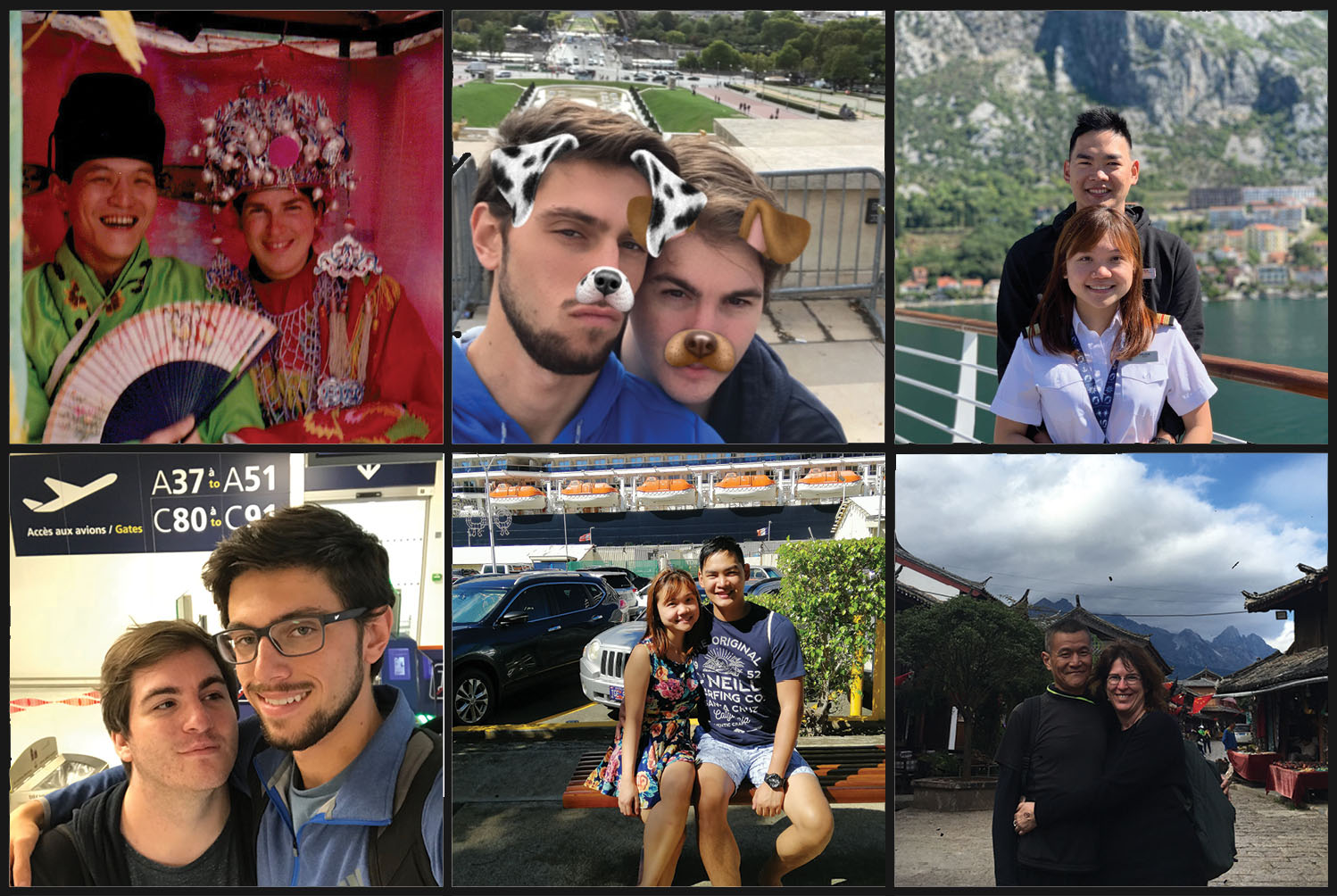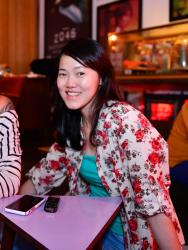1.
 At the end of October last year, Felicia, a twenty-nine-year-old Malaysian nurse, had been at sea for two months.
At the end of October last year, Felicia, a twenty-nine-year-old Malaysian nurse, had been at sea for two months.
Well, not quite at sea—docked off Singapore’s coast aboard a cruise ship devoid of passengers, waiting to set sail for America on a test voyage.
Felicia had spent her first days back on the job quarantined in her cabin. In the weeks that followed, her vessel was dispatched to Manila to pick up hundreds of essential crew members—medics and engineers, mostly—who had flown in from around the world. Felicia was tasked with testing them for the coronavirus before they were transferred to their respective cruise liners, which were also berthed off Singapore. No one was allowed to leave their ships, so even when Felicia was anchored in Manila, she couldn’t step out to meet up with her Filipino boyfriend, Joshua, who lives in the city.
It was aboard Holland America’s Noordam that they first met two years ago, and they’ve always tried to sync their contracts to the same cruise. It didn’t work out this time. As an entertainment coordinator, Joshua isn’t considered essential, so he’s been land-bound. The last time Felicia saw him was in June 2020 at Manila’s airport, when he saw her off to Malaysia after their last cruise together. “We’d been planning to get engaged and married, but then COVID happened.”
Waiting in Singapore, Felicia spent her days making sure her ship’s medical center was well maintained and supplied. She talked to Joshua through screens, missing how he makes her laugh. In the quiet evenings, ping-pong tournaments and movie nights on the open deck were arranged for the 124-person crew, appropriately social-distanced, to keep up their morale. “So we don’t feel like we’re stranded here alone.”
In early December, Felicia’s ship finally set sail, arriving in Los Angeles just before Christmas. She spent the holiday with her shipmates, required to stay on board until her contract ended on January 7, when she flew home to Malaysia. She had hoped to make it to Manila in her months off, but she isn’t allowed to exit her country. Joshua, meanwhile, isn’t allowed entry.
Their sweet reunion must wait. [VQRTrueStory by @emilydingwrites]
2.
When it became clear that COVID-19 was here for the long term, binational lovers around the world took to social media and implored governments to let them reunite despite travel bans.
They’re unmarried, mostly. Maybe just not yet. Maybe never. Maybe they can’t marry: Same-sex relationships are still illegal in some countries, or are conditional on religious conversion as a prerequisite. Some couples have working and living arrangements that preclude them from obtaining residence permits in either partner’s country.
They post pictures—hashtagged #loveisnottourism—of themselves embracing their partners and share stories of how they met and the toll of their separation. This mosaic of longing insists that love and family, in all their forms, is deserving of compassion. The young woman who undergoes surgery for cancer without her boyfriend by her side; the husband who has to let his partner give birth alone; the mother and her children on the phone with their father, waving across the channel separating Singapore and Malaysia, even though they can’t actually see him.
To witness them proclaim their love so publicly is to be heartened in a time of increasing ethnocentrism and nationalism. They also test our assumptions about what love looks like in a globalized age, as several countries, having made the “sweetheart” exception, impose various requirements for reunion. What if you’ve only been together for six months? What if you’ve never lived together? How do you quantify the strength of love?
In Belgium last year, the government demanded certain evidence of a relationship’s durability. The lovers filed a class-action suit, calling the requirements discriminatory, arbitrary, and infantilizing. They rallied on the street in human-heart formation, whisked more than a hundred pink paper planes carrying the names of separated Belgian couples and families through the prime minister’s mail slot. On one paper plane, someone had scrawled: “2000 broken hearts. What are you waiting for?”
3.

Edda and Jian met at a mutual friend’s party in Shanghai in ’94, on the night before Chinese New Year. She had relocated to the city to study traditional Chinese medicine, and by the time she left two years later—her father’s illness called her back to Germany—she and Jian had become serious.
She was twenty-three, he was twenty-nine. At the time, the Chinese government was just beginning to open up travel for its citizens after decades of restrictions. Jian didn’t have a passport. Edda felt she was too young to marry. “I still wasn’t sure about my own life, and I didn’t feel ready to take responsibility for him.”
They left each other heartbroken, but kept up a long-distance relationship for two years before deciding to end it and losing contact in 2003.
Sixteen years later, after going through a divorce and raising a daughter, Edda looked through her old letters with Jian and found his phone number. It was the day before Chinese New Year. Tentatively, she sent a message in Mandarin: She had an upcoming trip to Shanghai for another course and, on the chance he saw this message, would he like to meet? He replied almost immediately: He looked forward to it.
“When we met again, we realized that we were still in love—or again.” She laughed. “We both think it must be fate.”
Jian had also married and divorced, and had lived a varied life as a DJ, a farmer, a photographer. They planned to meet again in Hamburg last year, had to defer. Unlike China, Germany exempts unmarried binational couples from travel restrictions—but, at the time, only if they had previously met in Germany or recently lived together abroad.
“I just had the feeling: Oh no, not again. We found each other, and we thought we had a chance this time. Now it’s just really frustrating.”
But it wasn’t their relationship she was worried about. It was the uncertainty of how long the separation would last, of not having something to look forward to. Worst of all, it was not being able to share the burden of these anxious times with the person who could most give her comfort. [VQRTrueStory by @emilydingwrites]
4.
 “Why is it okay for married couples, business people, and Kylie Jenner to fly? But it’s not okay for us because we’re not married?”
“Why is it okay for married couples, business people, and Kylie Jenner to fly? But it’s not okay for us because we’re not married?”
After 181 days apart, Julien, 30, managed to reunite with James, 24, again in Croatia for eighteen days in September. A chemical engineer, James had a job to go back to; this was all the time they could steal away together.
For a while, Croatia was a lifeline for many lovers suspended from entering each other’s countries, and it was one of very few that welcomed French and American citizens. Since Julien and James had been a couple, through Julien’s mother’s illness and death, they had met at least every three months—alternating between Paris and New York.
But when France banned travel to Croatia, there, too, went their lifeline to each other. “Anyway, how are you supposed to spend fourteen days in a foreign country just to see your partner? Croatia cost us 3,000 euros. That’s not something we would be able to do throughout the year.”
Separated again, Julien started searching for a job after an opportunity in cyber security fell through, and looked into obtaining a laissez-passer for James, which would let him enter France as the partner of a French citizen. But their August 13 application was rejected two months later, citing changed rules. “So basically, the plan is to have no plan,” Julien said.
With the six-hour time difference between them, they tried to talk as much as they could amid their daily routines. They played card games over FaceTime. They fought sometimes. “With the distance, there are days where I just feel it’s never going to get any better. But we have so many memories together that I know he’s the right person for me.”
Those memories go back to the summer of 2017: Julien is visiting New York, waiting to take the train out to Long Island to see a friend. On the platform, he spots someone very tall waiting for the same train. They start talking, board the same carriage, and chat all the way to Long Island. They exchange Instagrams, and it begins. [VQRTrueStory by @emilydingwrites]
These dispatches are from #VQRTrueStory, our social-media experiment in nonfiction, which you can follow by visiting us on Instagram: @vqreview.








